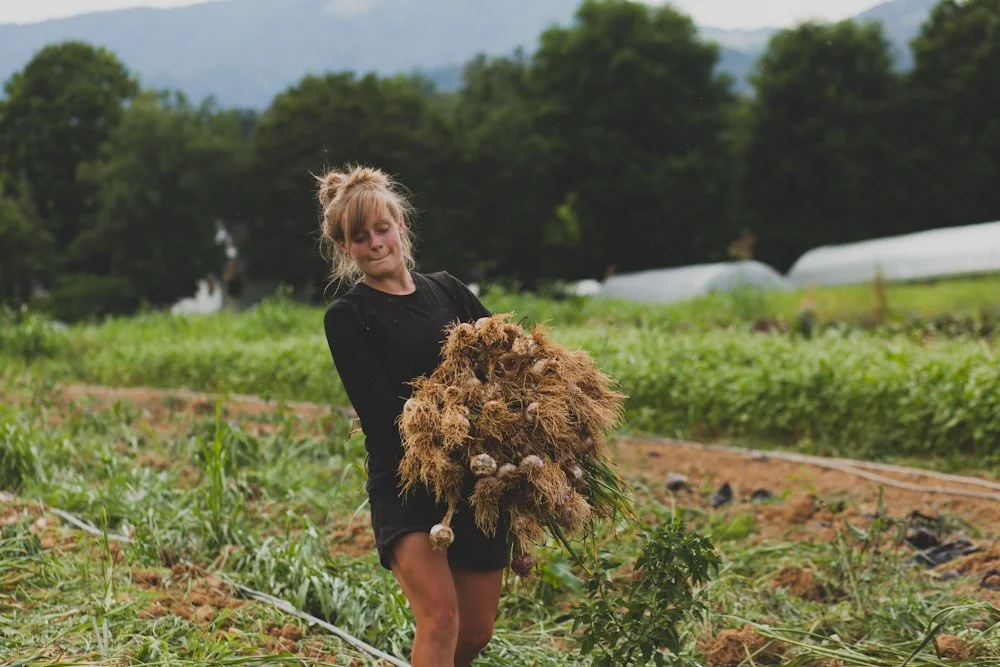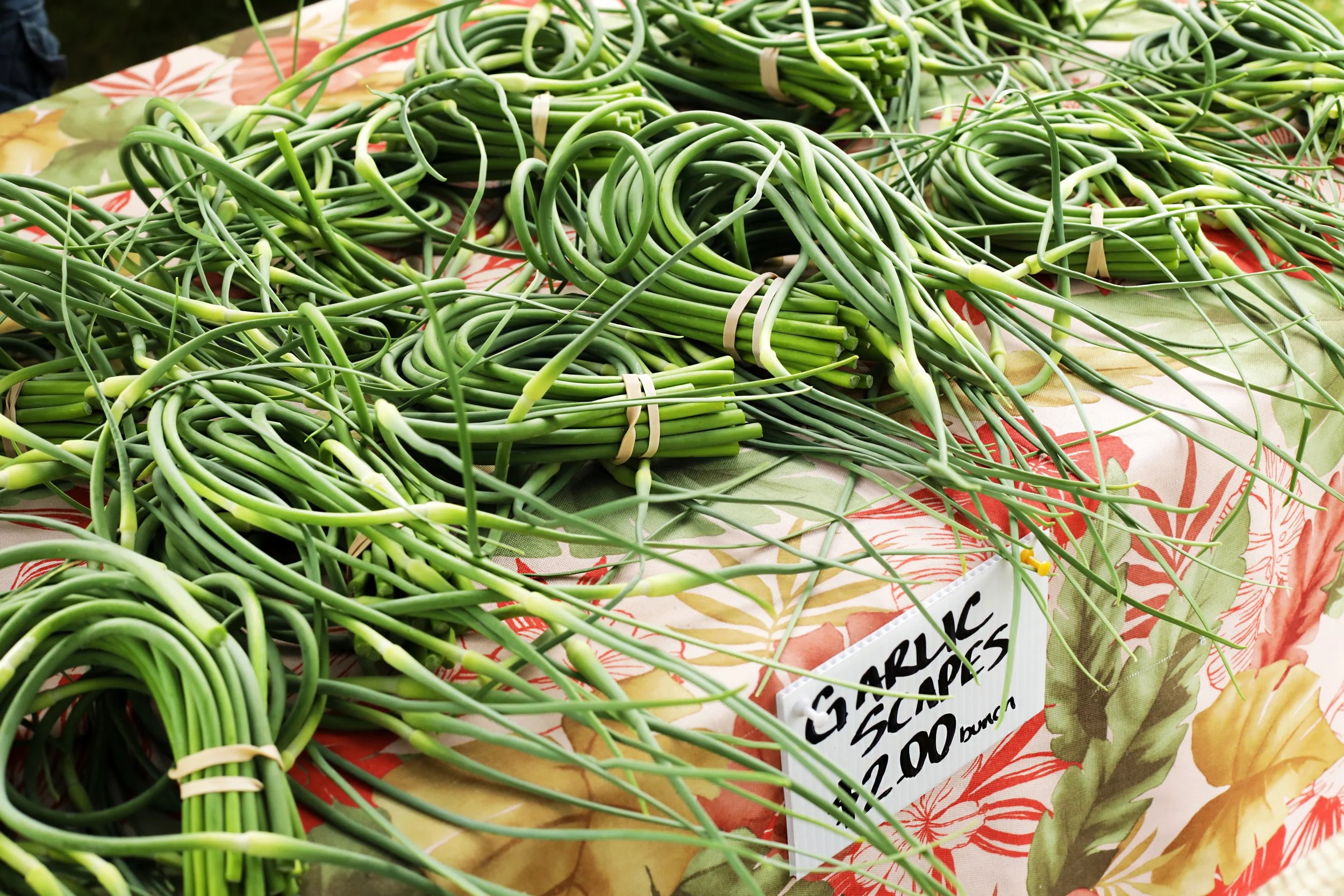Ask OGS: Garlic Planting
Dear OGS,
I heard that the time to plant garlic is in the fall. If that’s true, how do I plant it?
— Roger
Asheville, NC
Dear Roger,
Garlic is best planted in the fall and harvested the following summer, around mid-July. Spring-planted garlic will grow, but the bulbs typically won’t be as large. In Western North Carolina, the ideal planting window is from mid-October to mid-November. Garlic thrives in well-drained, fertile soil rich in organic matter. Locally grown garlic makes the best seed because it is already regionally adapted, though grocery store garlic can also be planted successfully.
To plant:
Each garlic bulb should be separated into individual cloves. The largest cloves are ideal for planting, while the smaller ones can be eaten or planted densely to produce early garlic greens. Discard any cloves that are moldy, damaged, or diseased. Plant each clove point side up, about 4 inches apart, with 30 inches between rows. Gardeners can also plant in double rows spaced 6 inches apart, with 30 inches between each set. Avoid areas where onions have been planted in recent years to prevent disease buildup.
Growing on:
Little or no top growth appears over the winter, but shoots typically emerge by early March. A generous winter mulch helps suppress weeds and maintain soil moisture. Once leaf growth becomes visible in spring, fertilizing every two weeks with an organic product, such as Neptune’s Harvest Fish/Seaweed Blend, can promote healthy development. Soil moisture should remain even. As days shorten after the summer solstice, bulb formation begins, and garlic can quickly double in size during this stage.
To harvest:
Garlic should be harvested when about half of the leaves have turned brown. Digging too early results in smaller bulbs, while digging too late causes the outer skin to disintegrate and the bulbs to split. It’s best to check bulb development in the soil gently—bulbs should be plump, firm, and tightly wrapped. Loosen the soil with a garden fork to make it easier to lift the bulbs. Leave the tops on, bunch the bulbs together, and hang them to dry for about a month. Once cured, the tops can be trimmed off or left intact for braiding (softneck garlic works best for braids). If bulbs are rinsed, ensure they are completely dry before storage.
Next year’s seed:
The biggest, healthiest bulbs should be saved for next year’s planting and left unwashed. The largest cloves from those saved bulbs make the best seed for the following season. If one is not saving seed, a good strategy is to source high-quality organic or heirloom garlic from trusted suppliers—such as Sow True Seed, which has an extensive garlic collection; Annie’s Heirloom Seeds, which offers organic garlic bulbs; or Filaree Garlic Farm, a long-standing organic garlic seed producer.
Three types of garlic:
Softneck Garlic – The necks of this garlic remain soft when mature, making it suitable for braiding. It’s widely adaptable, stores the longest, and has the strongest flavor.
Hardneck Garlic – This type produces a scape (flower stalk) that is both edible and decorative when dried. Removing the scape encourages larger bulbs. Hardneck varieties are very cold-hardy, milder in flavor, and easier to peel, though they don’t store as long as softneck types.
Elephant Garlic – Technically closer to leeks, elephant garlic has a mild flavor and produces huge, easy-to-peel cloves. It should be heavily mulched, as it’s less winter-hardy, and can store for about a year.
Garlic is a rewarding, low-maintenance crop. Once planted and mulched, it requires minimal care aside from weeding. It’s celebrated for its healing properties and can even serve as a natural pest deterrent in the garden. Many gardeners enjoy crafting garlic braids as holiday gifts—each braid requires at least ten bulbs, so planting a generous amount yields a worthwhile payoff. At the very least, you’ll have a year’s supply of flavorful, homegrown garlic.
Best of luck,
OGS
This blog post, written and copyrighted by Ruth Gonzalez, was originally published as part of a previous Organic Growers School article series called "Ask Tom," which addressed the growing concern. Some updates may have been made by OGS staff to keep the content current.




